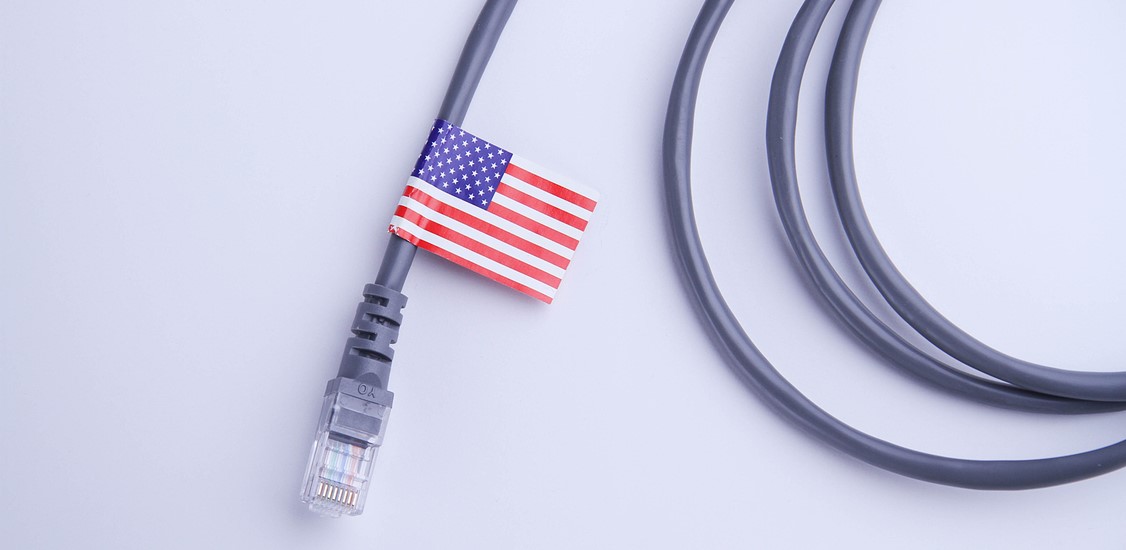“Buy America” is intended to create jobs, but with universal broadband deployment, it could backfire.
The floodgates of funding for broadband are about to burst. The 2021 Infrastructure Investment and Jobs Act (IIJA) charged the National Telecommunications and Information Administration (NTIA) with establishing the $42.45 billion Broadband Equity, Access, and Deployment (BEAD) Program. Since then, state governments and broadband stakeholders have invested, mapped, planned, and laid the foundation to expand high-speed internet service across the country. With this wave of funds about to flow, we are positioning ourselves carefully to reach our goal of universal broadband and closing the digital divide.
The catch? BEAD funds must also comply with the “Build America, Buy America” Act, requiring participating companies to source components for building out their fiber networks that are at least 55% made in America.
Buy America provisions and regulations are nothing new. They were included in the 1936 Rural Electrification Act and have been a part of many federally-funded broadband projects since. But now, States are expecting to receive and start spending BEAD grants within the next year - a historic level of funding, which some are concerned will fall short of reaching all of their unserved and underserved communities. As an official from the U.S. Department of Commerce put it, the launch of deployment and the shift to meet “Buy America” requirements should “line up perfectly,” but that alignment leaves very little room for mistakes on a project already poised for potential setbacks.
As I have said before, getting everyone access to competitive internet speeds will require partnerships, including public and private efforts between small and big companies. Achieving both universal broadband and the high-paying American jobs that will come with it will depend on those partnerships as well as flexibility in a process that has a razor-thin margin for error.
The industry has been scrambling
Since the announcement of incoming BEAD funding, broadband companies have been investing in infrastructure upgrades, building factories and offices, and expanding their network capacity to meet the anticipated increase in demand. Companies have been developing new technologies and innovative solutions to improve the efficiency of deployment and construction over that labor- and craft-intensive final mile. Smaller companies and community groups have begun plans for expanding high-speed internet services to their underserved and unserved regions.
But before that can happen, companies first have to tackle the new “Buy America” requirement for their supplies and manufacturing. On August 22, 2023, the NTIA proposed a BEAD Build America, Buy America Waiver that would release companies from some of the “Buy America” rules. While telecom equipment manufacturers hope this waiver will help broadband companies deploy BEAD projects on time, the waiver specifically calls for all fiber-optic cable to be American-made. The Fiber Broadband Association (FBA) estimates U.S. manufacturers produced about 109 million miles of fiber optic glass in 2022, exporting 37 million in surplus to other countries. The NTIA has determined the supply of U.S.-produced fiber-optic cable to be sufficient to satisfy the program. However, many smaller companies may not be able to handle the financial blow of the higher costs of purchasing fiber-optic cable from the U.S.
Then there are the components that surround the glass: coatings and support structures; ingredients like helium, neon, petroleum, steel, and resins; cabinets, splitters, optical line terminals (OLTs), and optical network terminals (ONTs) to spread those cables into networks. Our company recently invested in a Mexican factory to produce our components over a more robust supply chain. Now, like many other companies, we need to figure out the logistics of bringing that production into the U.S. Big industry names like Nokia and electronics manufacturer Adtran have announced plans to invest in domestic production of fiber-network electronics, but again, smaller companies will end up facing higher costs and delays.
American-made could cost American jobs
While “Buy America” is intended to build U.S. economic resilience and bring home well-paying American jobs, so is the deployment of universal broadband. Nokia’s U.S. electronics production will add an estimated 200 new jobs. Adtran’s is expected to create up to 300. From the total $65 billion in broadband infrastructure development awarded in the 2021 IIJA, experts have predicted it will create between 100,000 and 200,000 new jobs, with 70,000 in construction alone.
Companies not only have to relocate their manufacturing into the country and find workers to fill those factories but also train more technicians to meet construction needs. Experts predict fiber companies will need to pass more homes in the next five years than ever, but that last step of connecting homes to fiber networks is a time-consuming process with a higher risk for human error, often the most labor- and craft-intensive part of deployment. The challenge in this final phase is getting service to customers in harder-to-reach areas.
If unserved, this would also leave them without access to digital opportunities. A recent national skills report found that 92% of modern jobs require digital skills, and jobs requiring even one digital skill earn an average income of 23% more. In underpopulated, hard-to-reach pockets of the country where larger providers see less of a return on their investments, communities will depend on these smaller companies - grassroots municipal organizations, co-ops, and local ISPs - to build out and provide high-speed broadband.
Flexibility and partnership: a middle way
“Buy America” is an important national economic goal, but those efforts shouldn’t delay or derail our greater goal of closing the digital divide. Government officials are seeking to understand and balance risk of excessive costs from “Buy America” mandates that can ultimately lead to a greater digital divide. Smaller companies should pay attention to the progress of NTIA’s nonavailability waiver and start working with industry leaders as they expand their domestic production of broadband components. Community organizations and groups living in underserved or unserved communities should stay engaged with deployment in their areas and call on political leaders if obstacles might be slowing it down. This is a once-in-a-lifetime opportunity - let us all do what we can to make it happen.






















